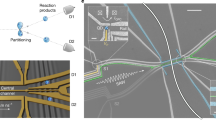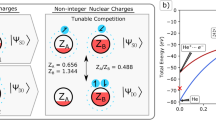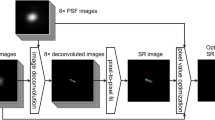Abstract
WE have recently made observations with the new Kodak nuclearresearch emulsions, described by Dr. R. W. Berriman1, which record the tracks of particles of charge e, even at minimum ionization. The new plate represent a technical advance of great importance ; they allow us to obtain a much deeper insight into nuclear processes than was possible withytfhe older emulsions, and they greatly extend the field of application of the photographic method to physical and biological problems.
This is a preview of subscription content, access via your institution
Access options
Similar content being viewed by others
References
Berriman, Nature, 162, 992 (1948).
Leprince-Ringuet, C.R. Acad. Sci., Paris, 226, 1897 (1948). Rochester and Butler, Nature, 160, 855 (1947). Bradt and Peters, Report to the Bristol Symposium, 1948 (in the press). Alichanian, Alichanov and Weissenberg, J. of Exp. and Theoret. Phys., U.S.S.R., 18, 301 (1948); and other references.
Camerini, Muirhead, Powell and Ritson, Nature, 162, 433 (1948).
Goldschmidt-Clermont, King, Muirhead and Ritson, Proc. Phys. Soc., 61, 138 (1948).
Lattes, Occhialini and Powell, Proc. Phys. Soc., 61, 173 (1948).
Author information
Authors and Affiliations
Rights and permissions
About this article
Cite this article
Brown, R., Camerini, U., Fowler, P. et al. Observations with Electron-Sensitive Plates Exposed to Cosmic Radiation. Nature 163, 47–51 (1949). https://doi.org/10.1038/163047a0
Published:
Issue date:
DOI: https://doi.org/10.1038/163047a0
This article is cited by
-
How a forgotten physicist’s discovery broke the symmetry of the Universe
Nature (2024)
-
Historical introduction. The β-decay and the fundamental properties of weak interactions
La Rivista del Nuovo Cimento (1983)
-
Eine Neue kernphysikalische Emulsion Forte P/22
Acta Physica Academiae Scientiarum Hungaricae (1957)



